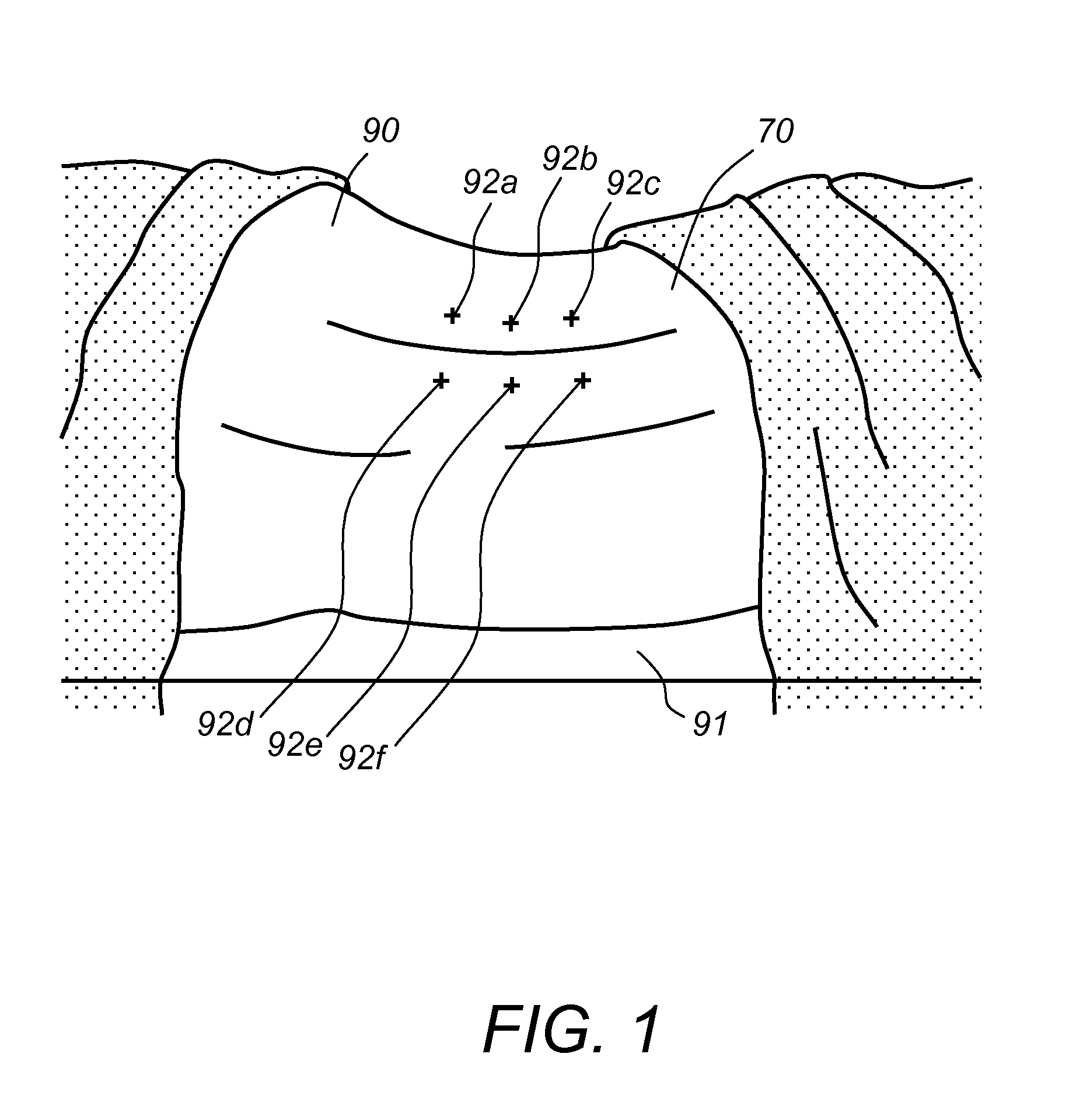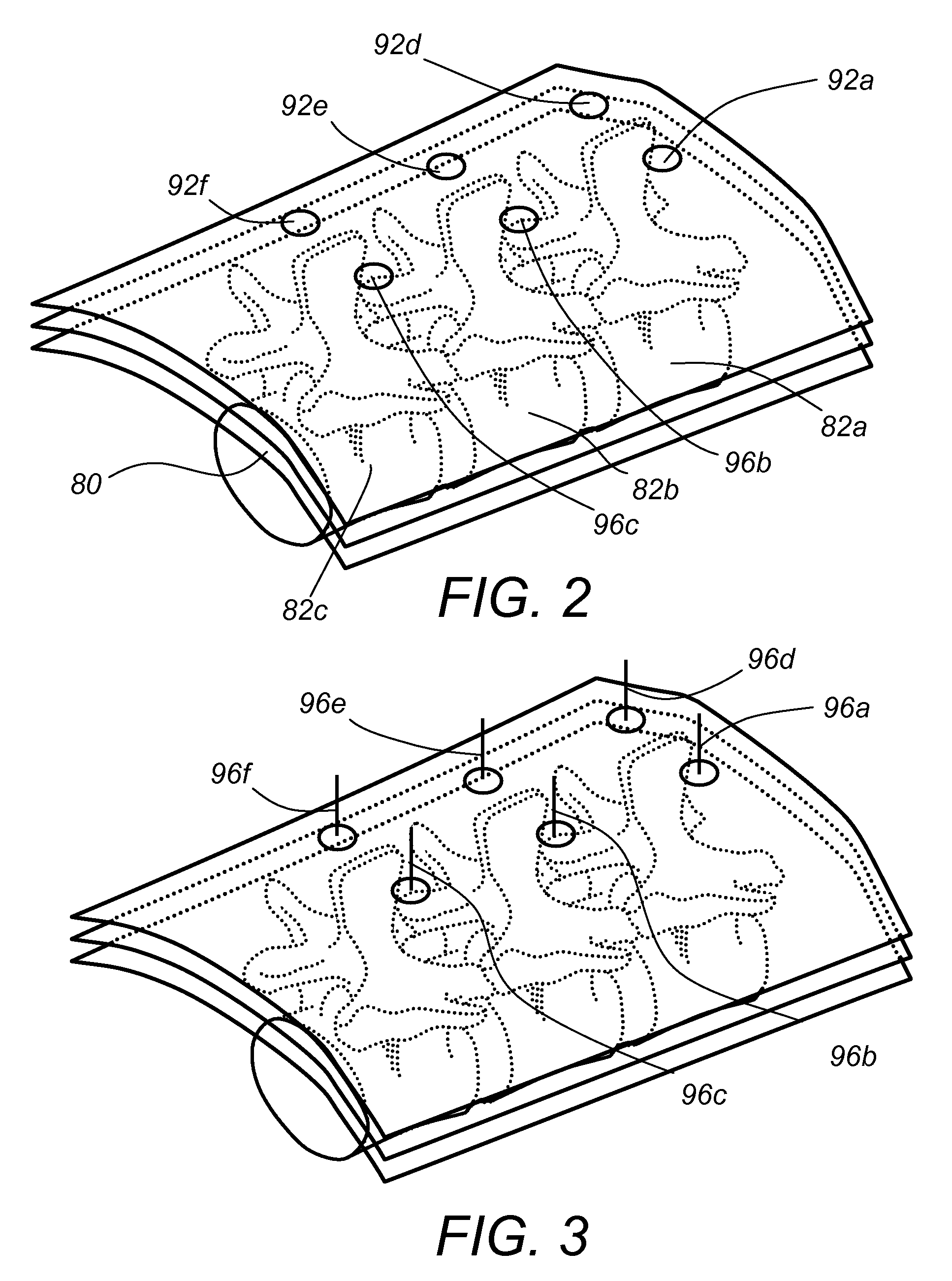System and method for implanting spinal stabilization devices
a spinal stabilization device and system technology, applied in the field of system and method for implanting spinal stabilization devices, can solve the problems of prolonged recovery time, increased risk of infection, and increased so as to reduce the risk of iatrogenic injuries to vital structures, improve visualization, and reduce the effect of technical difficulty of these operations
- Summary
- Abstract
- Description
- Claims
- Application Information
AI Technical Summary
Benefits of technology
Problems solved by technology
Method used
Image
Examples
Embodiment Construction
[0046]The present invention relates to a system and a method for placing spinal stabilization devices into a patient's back via minimally invasive surgery (MIS).
[0047]Referring to FIG. 1, a patient 90 is positioned prone, lying flat on an operating table 91 in preparation for a minimally invasive surgery. Locations 92a-92f are marked on the patient's lower back corresponding to underlying pedicle locations of adjacent vertebrae 82a, 82b, 82c, respectively, and incisions are made on the marked areas, as shown in FIG. 2. The incisions extend through the lumbodorsal fascia to the deep tissues. Next, guide K-wires 96a-96f are inserted through the openings formed by the incisions and are placed in contact with the underlying pedicles, as shown in FIG. 3. For MIS procedures the tissue around the K-wires is dilated and access devices are inserted around the locations of the K-wires leading to the underlying pedicles, shown in FIG. 4. For spinal stabilization procedures, pedicle screws are ...
PUM
 Login to View More
Login to View More Abstract
Description
Claims
Application Information
 Login to View More
Login to View More - R&D
- Intellectual Property
- Life Sciences
- Materials
- Tech Scout
- Unparalleled Data Quality
- Higher Quality Content
- 60% Fewer Hallucinations
Browse by: Latest US Patents, China's latest patents, Technical Efficacy Thesaurus, Application Domain, Technology Topic, Popular Technical Reports.
© 2025 PatSnap. All rights reserved.Legal|Privacy policy|Modern Slavery Act Transparency Statement|Sitemap|About US| Contact US: help@patsnap.com



